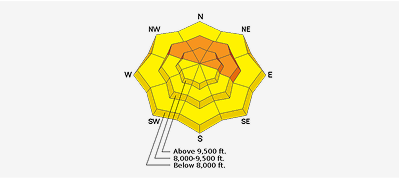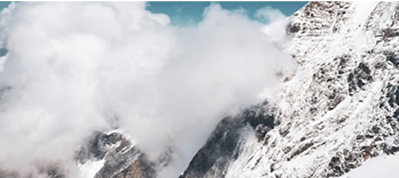13 inches of light density snow fell, and the event began around 1830 on Sunday night. Snow fall rates were sustained for up to 7 hours at S5 plus. Winds were strong during the event out of the WNW. Temperatures had already begun to drop by the time the snow began to fall. Above 8500 feet the snowpack had already refrozen substantially and the bonding of the new snow was poor. Below 8500 feet the recent warm temperatures had facilitated the snowpack to be moist, and as such the bonding was better. By mid day on Monday the top 5 inches of the new snow was still dry, but it was getting damp from below due to these moist layers.
Winds adversely affected the snow in all upper elevation locations except on the east aspects. Even in moderately protected areas the new snow was dense and thick. Mid elevation protected areas and heavily treed areas in between 9000 and 9800 feet rode well in 8 to 10 inches of moderate to light density snow. Low and moderate angled slopes rode the best. Even on the seemingly well filled in upper elevation east slopes it was "bottom feeding" on slopes with angles >30 degrees.






